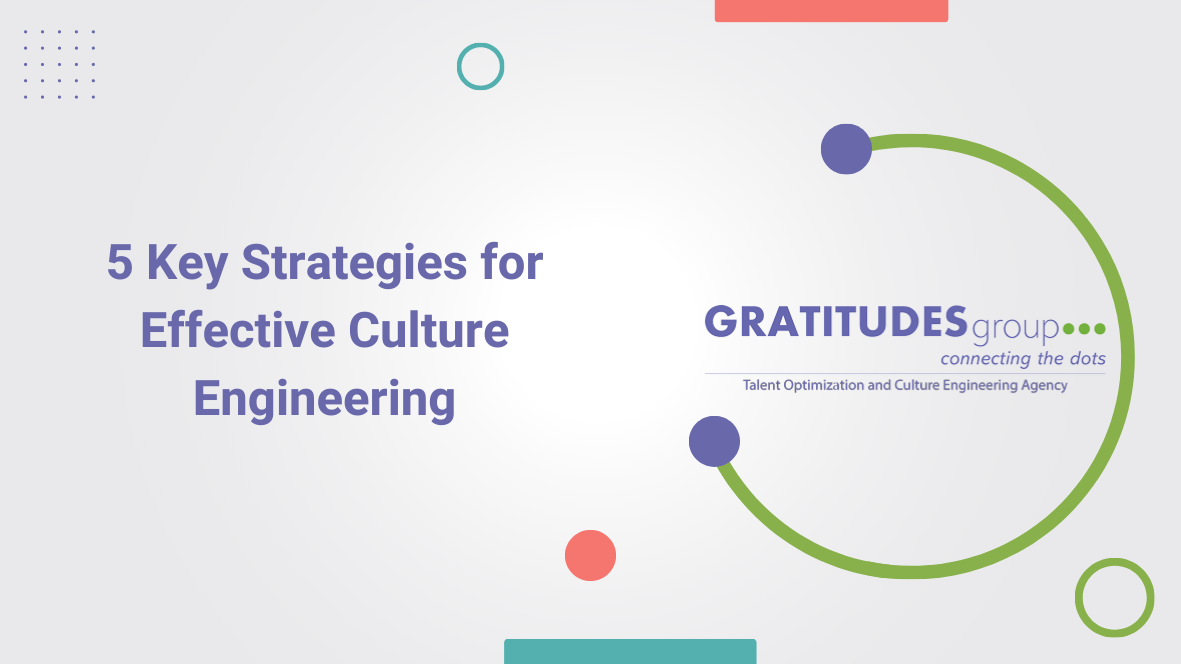What is culture engineering, and why is it important for organizations?
Culture engineering is the process of consciously and intentionally creating a workplace culture that serves to support an organization’s mission, values, and objectives. It involves directing and shaping the behavior of employees in order to promote organizational productivity and success. Culture engineering is important for organizations because it helps to create an environment in which all staff feel included, valued, respected, and empowered.
By establishing core values for the organization, encouraging diversity among employees, and fostering a sense of belonging among staff members, culture engineering can help to unite teams around shared goals and create a more collaborative working environment. Additionally, trust-based relationships between management and employees can help to encourage innovation by providing space for creative ideas to be shared and explored.
Culture engineering also ensures that team members are held accountable for their decisions while enabling them to take risks without fear of punishment. This encourages teams to come up with creative solutions that may not have been considered before and can lead to greater success for the organization as a whole.
Ultimately, culture engineering helps businesses achieve their objectives by leveraging their greatest asset — people — for maximum efficiency.
How does culture engineering impact organizational performance and success?
Culture engineering has a direct impact on organizational performance and success. By fostering trust, developing inspirational core values, building cultural diversity, and encouraging innovation, organizations can create an environment conducive to creativity and problem solving that will ultimately lead them towards success.
With the right strategies in place, culture engineering can improve employee engagement, customer relationships and product innovation while staying ahead in rapidly changing markets.
What are the key components of culture engineering?
At its core, culture engineering is about empowering people to work together towards a common goal. It requires clear, consistent communication and processes across different departments in order to create a unified environment where everyone is working toward the same objectives.
Clear goals should be established in order to motivate employees and keep them on track with what needs to be accomplished. Leaders should also promote collaboration among team members and encourage open communication between departments so that ideas can be freely shared without fear.
By following the five strategies below, you can effectively engineer the culture of your organization and lead your business to success. Establishing core values, creating an environment of trust, building cultural diversity, fostering innovation, and building a sense of belonging all play an important role in cultivating a positive work environment that leads to greater productivity and success.
With these strategies in place, you can ensure that your organization reaches its goals while providing employees with fulfilling work experiences.
Five effective strategies for culture engineering
- Establish core values: Core values are the set of beliefs and principles which guide an organization’s behavior, decision-making, and culture. These values should be based on the organization’s mission and vision while also considering the needs of its stakeholders such as customers, employees, suppliers, etc.
- Create an environment of trust: A trusting environment is fundamental for any successful organization as it allows for free exchange of ideas among personnel without fear or hesitation. In order to create a trusting environment, organizations must foster open, credible communication between departments and personnel in addition to providing resources that back up these conversations with actionable steps.
- Build cultural diversity: Encouraging diversity within organizations helps bring different perspectives and experiences to the table which helps create more innovative solutions. Organizations should actively seek out different backgrounds, experiences, skill sets and ways of thinking in order to broaden their perspectives and promote collaboration among personnel.
- Foster innovation: Organizations must provide employees with resources that allow for creative problem solving such as hackathons or creative thinking sessions. This will encourage employees to think outside the box and come up with new ideas while also providing a sense of ownership which will ultimately lead towards success.
- Create a sense of belonging: Establishing a sense of community within organizations helps build an environment where people feel valued and appreciated regardless of their background or experience. By hosting team-building activities, allowing for flexible work schedules, and providing resources for employees to take ownership in the organization, organizations can successfully create a sense of belonging among its employees.
These key components of culture engineering, when implemented correctly, will contribute to business success. By leveraging these strategies, organizations have been able to remain competitive in rapidly changing markets while achieving record profits through better employee engagement, customer relationships, and product innovation. With the right strategies in place, culture engineering is an effective tool for any forward-looking business.
What are some real-world examples or case studies of successful culture engineering efforts?
- Amazon implemented culture engineering through their 14 Leadership Principles, which focus on customer obsession, ownership and innovation. By actively encouraging employees to think outside the box in order to solve problems and come up with new ideas, Amazon has developed an environment of trust and collaboration that has contributed to the company’s success.
- Apple’s Shared Values develop an environment of trust while inspiring individual contributions. The company’s values encourage its personnel to be open-minded and celebrate diversity while providing resources for creative problem solving.
- Spotify has successfully implemented culture engineering through their Brand Manisfesto, which focuses on the customer experience, collaboration, and innovation. By actively encouraging employees to work across departments, take creative risks, and challenge the status quo, Spotify has developed an environment of trust, innovation, and collaboration among its engineers, employees, and customers.
- Salesforce created their Customer 360 platform to provide customers with a unified view of their data. The platform allows for collaboration and innovation that has improved employee engagement, customer relationships, and product innovation.
- Southwest Airlines has successfully implemented culture engineering through its customer-focused approach, which encourages open and frank conversations between employees and customers. These exchanges foster trust and create customer relationships that extend beyond just the flight experience.
With the right strategies in place, culture engineering is an effective tool for any business looking to achieve great success. Culture engineering can be used to create an environment conducive to creativity and innovation and contribute to growth and profitability.
By actively fostering trust between personnel and departments, developing core values that inspire individual contributions, building cultural diversity and fostering innovation through initiatives such as hackathons or creative thinking exercises, organizations can successfully craft their cultures to be agile and stay ahead of the competition in rapidly changing markets. The strategies discussed above are applicable across any sector or industry. Start a conversation with GRATITUDESgroup today to learn more about engineering your business’ culture for success.








